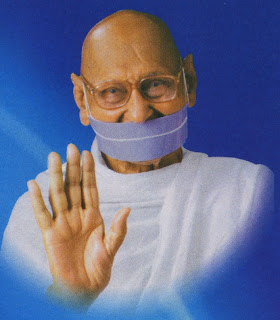About Acharya Mahapragya
Born | |
Died | 9 May 2010 (aged 89)Sardarshahar, Rajasthan, India |
Occupation | Religious leader |
Predecessor | |
Political movement | Ahimsa Yatra |
Mahapragya was born to Tola Ram Choraria and Baluji in the small village of Tamkor in the Jhunjhunu district in Rajasthan . It was a Jain Shwetambar Terapanthi family. He was called Nathmal by his family. He lost his father when he was just two and half months old It was a joint family and the child had support from all the family members. Nathmal's mother was very affectionate for the child and took utmost care in the upbringing. There was no formal school in Tamkor village in those days and he didn't get any formal education. Nathmal took some lessons on letters and mathematics tables from local teacher(s). Mahapragya's mother was a religious lady. She preferred to devote al herl spare time to spiritual exertion. She also used to recite religious songs which made imprints on the young child's heart. Her indulgence towards spirituality inspired the young child.
The family and child Nathmal used to be in regular touch with Jain monks. He got lessons on Jain philosophy from monks who visited the village. Regular contact with monks nourished the spiritual seed in the child. Nathmal then conveyed his wishes of getting initiated into monkhood to his mother . On 29 January 1931, he became a monk at the age of ten. Acharya Kalugani, eighth Acharya of Jain Swetambar Terapanth, initiated Nathmal to monkhood in the town of Sardarsahar (Rajasthan). With this, Nathmal became Muni Nathmal [12] . Acharya Kalugani arranged for Muni Nathmal's studies under Muni Tulsi's classes, who later became the Ninth Acharya. Nathmal started getting lessons in the monastery on various subjects of Jain philosophy.
Nathmal had a great learning capacity and a good memory. With Muni Tulsi, the child’s intellectual development became accelerated and he memorised thousands of sermons and verses in Hindi, Sanskrit, Prakrit, and Rajasthani. His education at the monastery included history, philosophy, logic, and grammar. He made an in-depth study of Jain scriptures, became a scholar of Jain Agamas, and a critic of Indian and western philosophy. By age 22, he was competent in Hindi, Sanskrit, Prakrit, and Rajasthani languages and literature. In Sanskrit, he was also an expert impromptu or extempore poet and has demonstrated this skill in many gatherings of intellectuals. A thirst for knowledge led him also to study physics, biology, ayurved, politics, economics, and sociology
